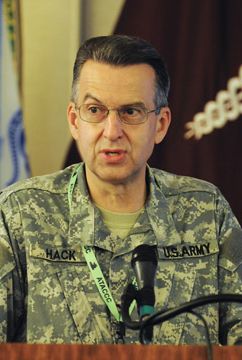The Fire Resistant Uniform: An Effective Mitigation Strategy in the Prevention of Burn Casualties

While the treatment of injuries is a main topic of military medicine, the prevention of injuries is also a very important aspect of the work that is being done. Col. Evan Renz, the director of the Burn Unit at the U.S. Army Institute of Surgical Research, spoke to attendees of the 2011 Advanced Technology Applications for Combat Casualty Care conference Wednesday, Aug. 17 about this topic.
A research study conducted over the past six years by Renz and the USAISR, assessed the use of a fire resistance combat uniform to help reduce the number and severity of burns sustained in combat. Burns are common in combat operations and they can cause painful and debilitating lifelong injuries and occasionally result in amputations. Over the past eight years, USAISR has seen more than 1,000 patients admitted with severe burns. This number began to rise in 2003, with a majority of patients sustaining burns to the extremities.
However, new products can have a profound effect on the prevention of burns and using them is as simple as getting dressed in the morning. While Interceptor Body Armor provides protection to the neck and torso, the extremities are left susceptible. Beginning in 2005, new technology was being developed to create a new fire resistant uniform with the ability to protect the extremities; this uniform was called the Fire Resistant Environmental Ensemble. These new uniforms and the materials used to create them were found to be comfortable, usable, and effective in test as well as day-to-day operations. Deployment of the Fire Resistant Combat Uniform has resulted in a decrease of burn casualty admissions. One component of the uniform, the Army Combat Shirt, resulted in major decrease in burn casualty admission, from 325 admissions in 2005 to just 96 admissions in 2011.
While these efforts may not be within the traditional scope of military medicine they demonstrate capabilities in science and technology that are still relevant to the community as well as provide a solution to one of the Army's most challenging problems. Maj. Gen. James Gilman, the commanding general of the U.S. Army Medical Research and Materiel Command, commended Renz and the USAISR team for this extraordinary effort toward solving this problem.














